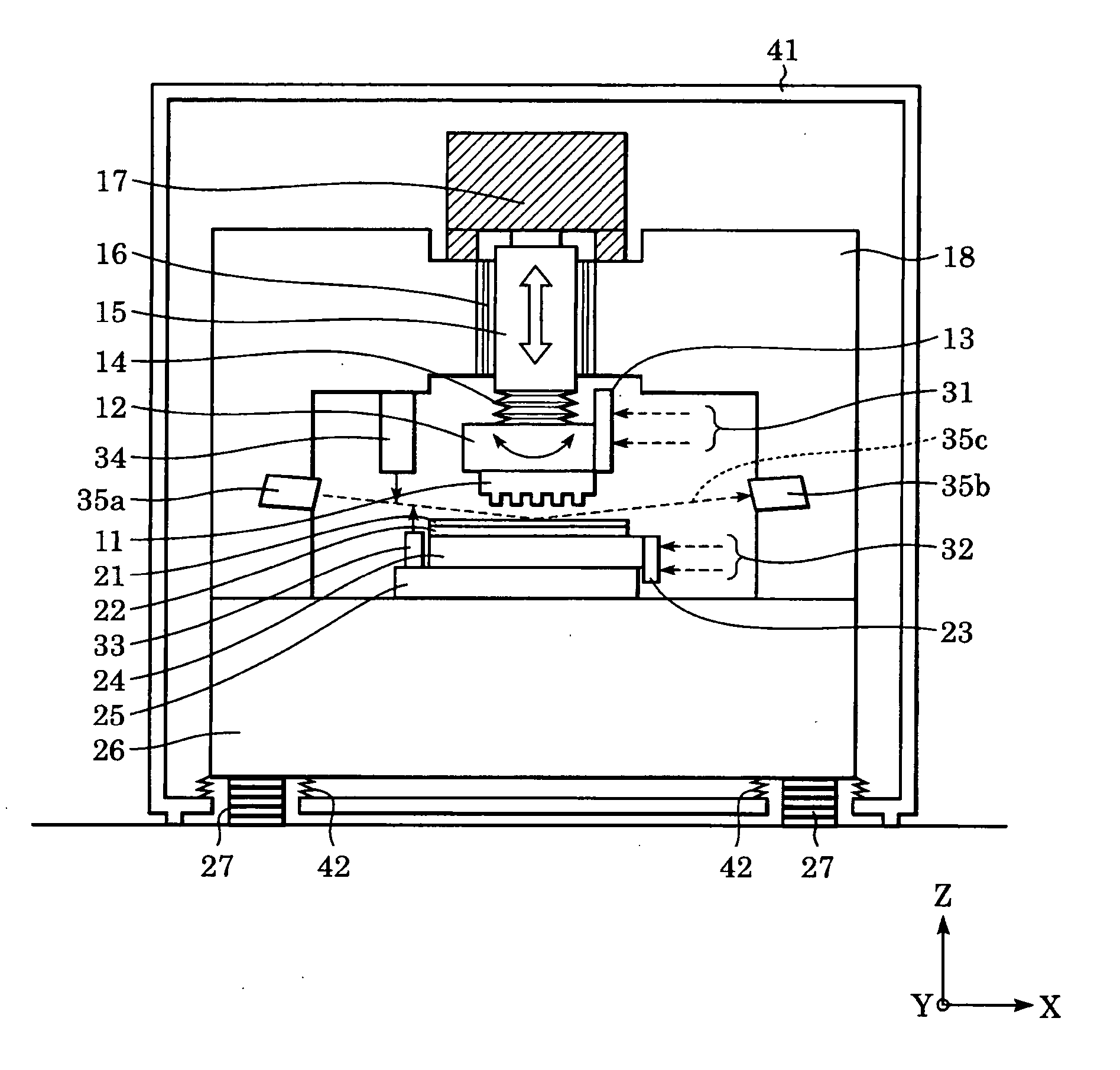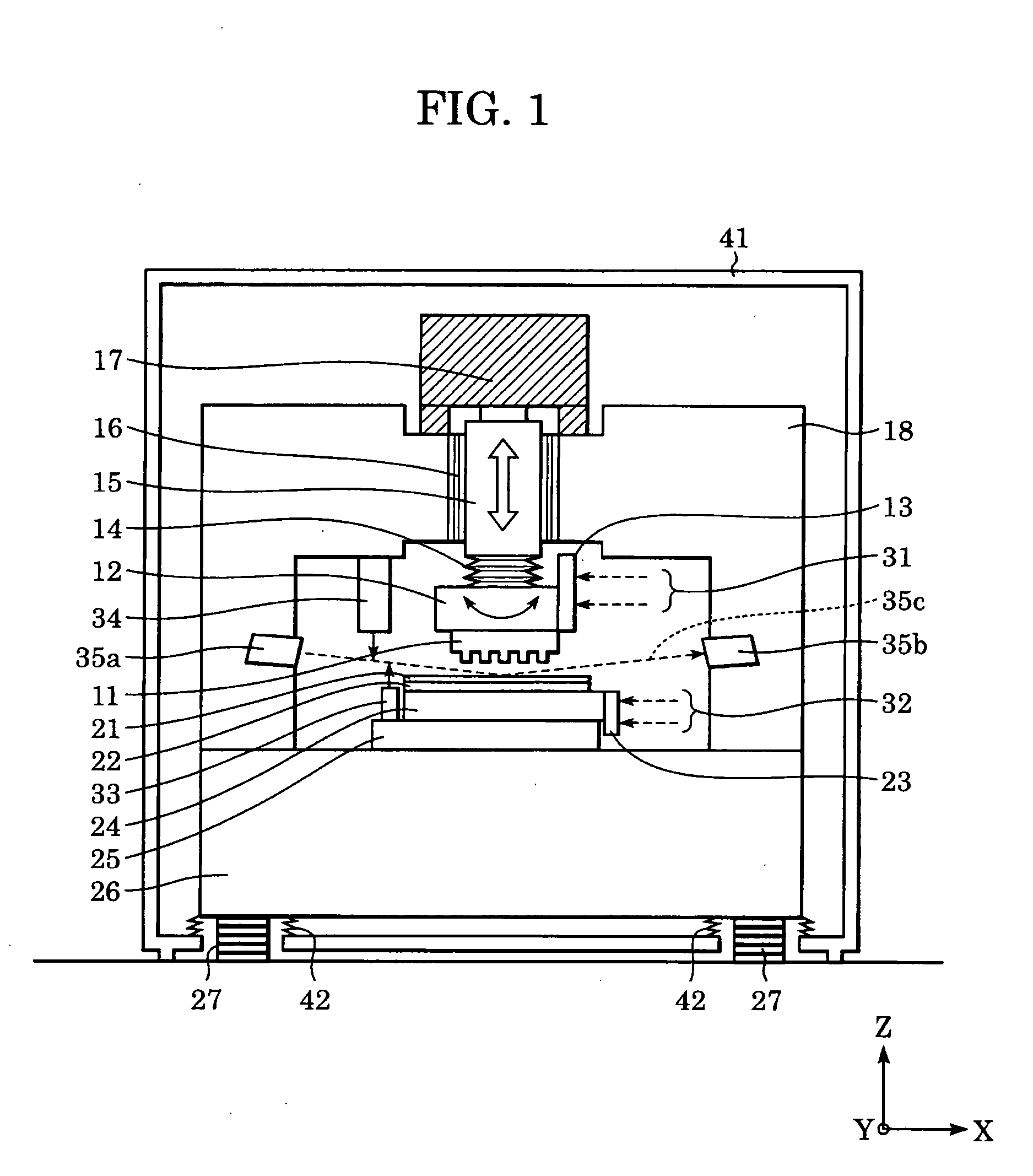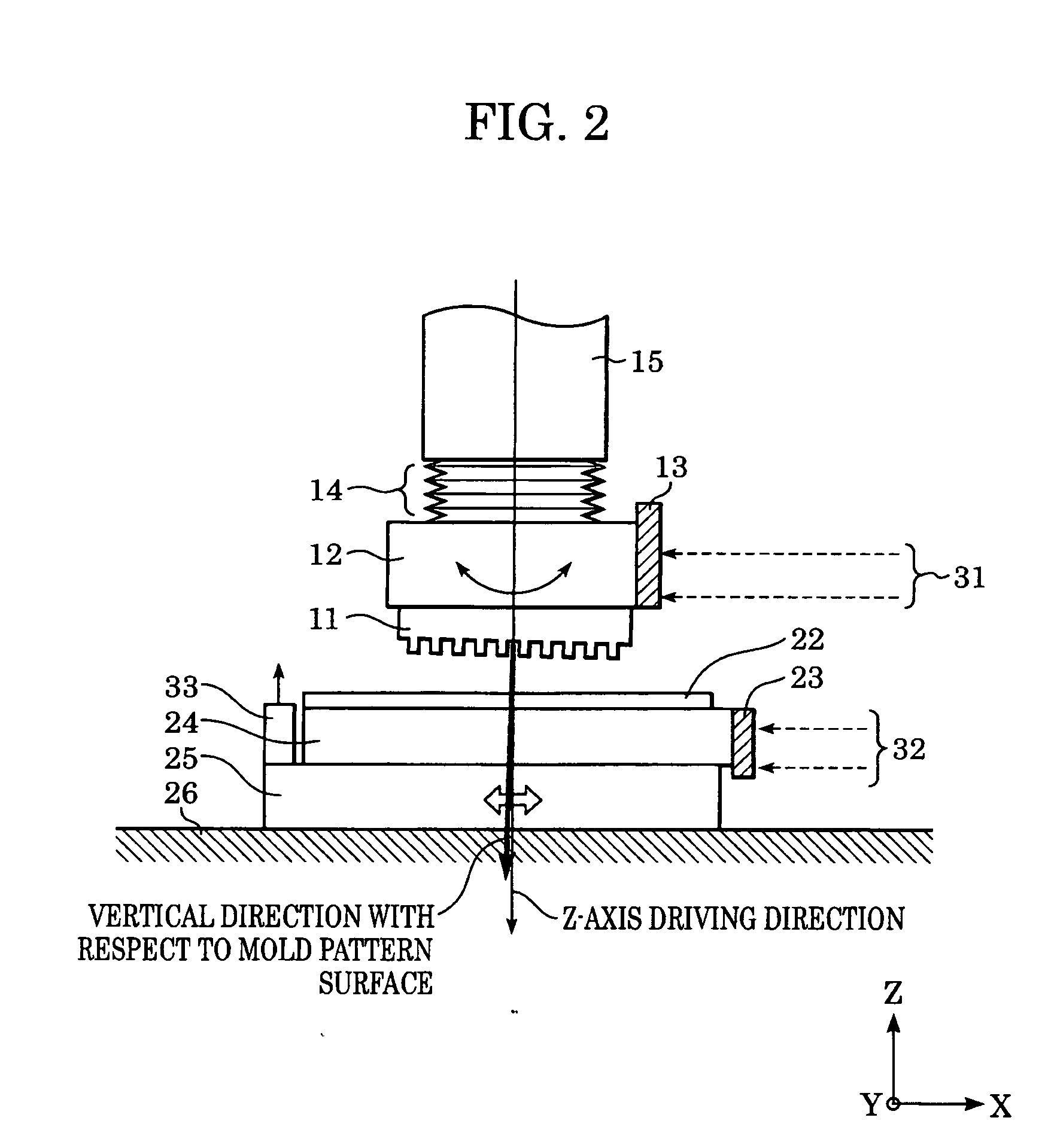Pattern forming apparatus
- Summary
- Abstract
- Description
- Claims
- Application Information
AI Technical Summary
Benefits of technology
Problems solved by technology
Method used
Image
Examples
first embodiment
[0039] [First Embodiment]
[0040]FIG. 1 is a drawing illustrating a pattern forming apparatus (nanoimprint apparatus) according to the present embodiment, showing a general structure of the apparatus. In order to facilitate the description, the directions are defined as shown by arrows in the drawing. The lateral direction is defined as X-axis, the perpendicular direction is defined as Y-axis, and the vertical direction is defined as Z-axis with respect to the plane of the drawing.
[0041] A mold 11 is an original plate and is formed with a fine pattern on the lower surface thereof by an Electron Beam Lithography or the like. The mold 11 is retained by a mold chuck 12 as a retaining device. The mold chuck 12 includes an electrostatic chuck for retaining an object with an electrostatic force and a mechanical chuck for retaining the object mechanically. A mold reference mirror 13 having extremely high level of flatness is fixed to the mold chuck 12, which serves as a measured section for...
second embodiment
[0070] [Second Embodiment]
[0071]FIG. 7 is a drawing illustrating the pattern forming apparatus (nanoimprint apparatus) according to the present embodiment, and showing a general structure of the entire apparatus. In order to facilitate the description, the directions are defined as shown by arrows in the drawing. The lateral direction is defined as X-axis, the perpendicular direction is defined as Y-axis, and the vertical direction is defined to Z-axis with respect to the plane of the drawing. The like reference member as in the first embodiment are represented by the same reference numerals.
[0072] The mold 11 is an original plate and is formed with a fine pattern on the lower surface thereof by an EB drawing apparatus or the like. The mold 11 is retained by a mold chuck 12 as a retaining device. The mold chuck 12 includes an electrostatic chuck for retaining an object with an electrostatic force and a mechanical chuck for retaining the object mechanically. A mold reference mirror ...
third embodiment
[0102] [Third Embodiment]
[0103] Subsequently, an embodiment of a manufacturing method of a device utilizing the above-described fine processing apparatus will be described.
[0104]FIG. 15 shows a manufacturing flow of a semiconductor device (semiconductor chip such as an IC or LSI, a liquid crystal panel, a CCD, etc . . . . ). In Step 1 (circuit design), a circuit of the semiconductor device is designed. In Step 2 (mold manufacturing), a mold on which the designed circuit pattern is formed is manufactured. On the other hand, in Step 3 (wafer manufacturing), a wafer is manufactured using material such as silicon. Step 4 (wafer process) is referred to as preprocess, where an actual circuit is formed on the wafer using the prepared mold and the wafer. The subsequent Step 5 (assembly) is referred to as post-process, which is a process for obtaining chips using the wafer manufactured in Step 5 and includes an assembling step (dicing, bonding), a packaging step (encapsulation of the chip)....
PUM
 Login to View More
Login to View More Abstract
Description
Claims
Application Information
 Login to View More
Login to View More - R&D
- Intellectual Property
- Life Sciences
- Materials
- Tech Scout
- Unparalleled Data Quality
- Higher Quality Content
- 60% Fewer Hallucinations
Browse by: Latest US Patents, China's latest patents, Technical Efficacy Thesaurus, Application Domain, Technology Topic, Popular Technical Reports.
© 2025 PatSnap. All rights reserved.Legal|Privacy policy|Modern Slavery Act Transparency Statement|Sitemap|About US| Contact US: help@patsnap.com



